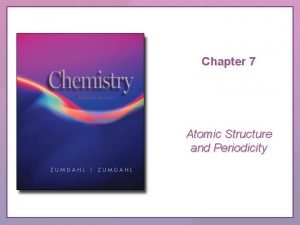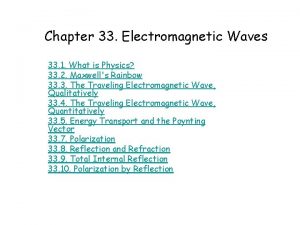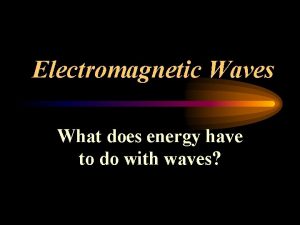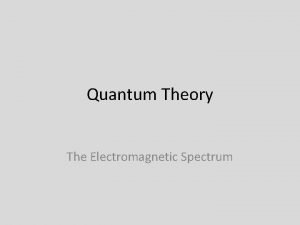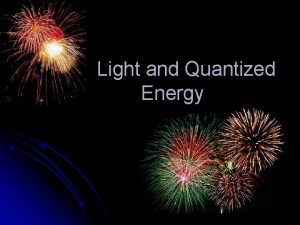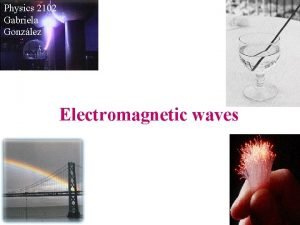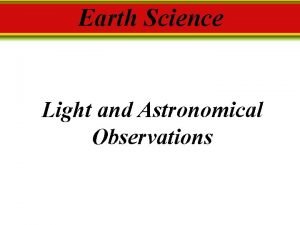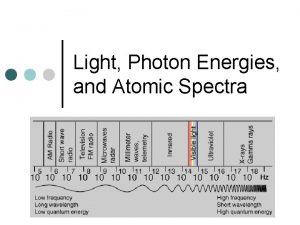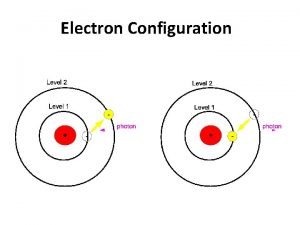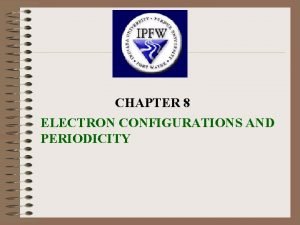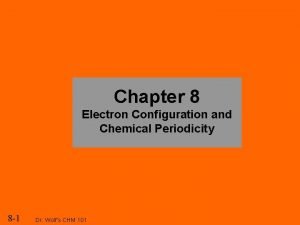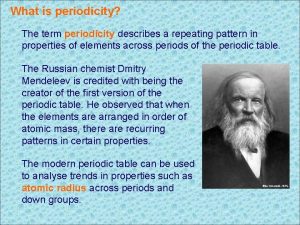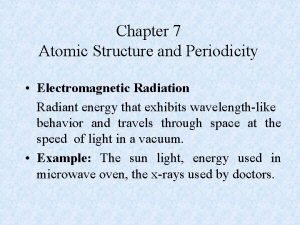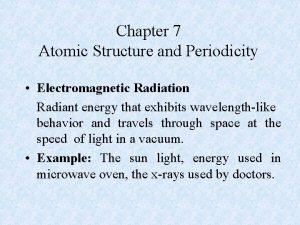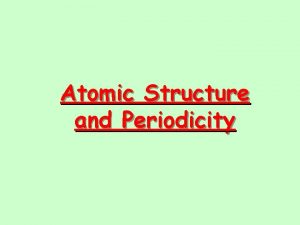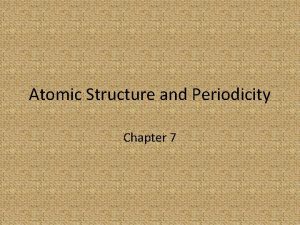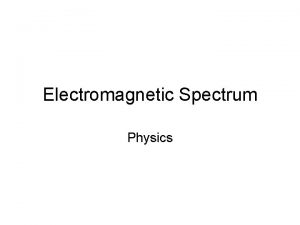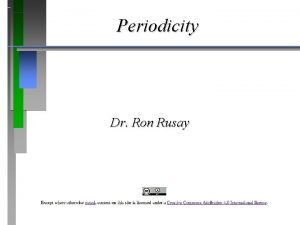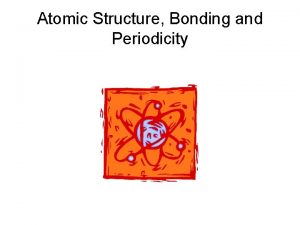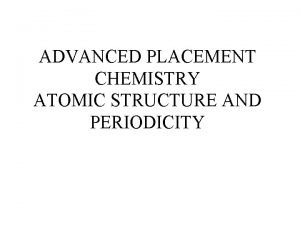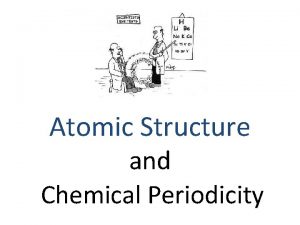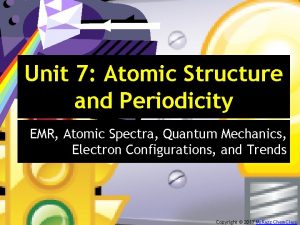Atomic Structure and Periodicity Electromagnetic Radiation and Nature















- Slides: 15

Atomic Structure and Periodicity Electromagnetic Radiation and Nature of Matter

Quantum Theory l l From Democritus to Einstein has come the modern atomic theory. What is the nature of atoms? Remember Dalton’s theory?

Electromagnetic Radiation l l One way energy travels through space is via electromagnetic radiation. All forms of radiant energy have wavelike behavior.

Waves l Waves have 3 characteristics: l. Wavelength l. Frequency l. Speed

Wave characteristics l is the symbol for wavelength, the distance between two consecutive peaks. l is the frequency and is number of waves that pass through a given point in space in 1 second. l The speed of all electromagnetic radiation is the speed of light or c.

Wavelength and Frequency l The longer the wavelength, the shorter the frequency. l l = c l Units for are 1/sec or hertz, Hz.

Waves have energy! l Microwaves passing through water transfer their energy to the water and eventually heating the water to boiling. l Fire transfers heat by infrared radiation. l Which is higher energy? Red or blue light?

Flame tests! l Example: l Sr(NO 3)2 gives off a red flame of 650 nm. l What is its frequency?

Answer l = c or = c/ l = 6. 50 nm x 102 l C = 2. 9979 x 108 m/s l 1 m = 1 x 109 nm l = 4. 61 x 1014 Hz

Nature of Matter 19 th century thought: Matter and energy are distinct. l Matter was made of particles. l Light was an energy that moved in waves. l With that the study of physics was complete, there would be no new information, or was there? l

Max Planck l Studied radiation of soft bodies heated to incandescence. (light) l Originally thought matter could absorb or emit any quantity of energy. l Max found that the energy could only be gained or lost in whole number multipliers of the equation h

Planck’s Constant lh is Planck’s constant and was found to equal 6. 626 x 10 -34 J s. l The change in energy for a system may be found by ΔE=nh l This equation states that energy is given off in packets or quantized. l Each packet of energy is a quantum.

Example l The blue in fireworks is often from Copper (I) chloride heated to 1200°C. Blue light has a wavelength of 450 nm. What is the quantum of energy that may be emitted by light at 450 nm?

Answer: l ΔE=nh l n=1 = c/ 8 l =2. 9979 x 10 m/s 4. 5 x 10 -7 m =6. 6 x 10 14 s-1

Answer continued: l ΔE=nh x 10 -34 J s) l = (1)(6. 626 x 10 -34 J s)(6. 6 x 1014 s-1) l ΔE=4. 417 x 10 -19 J l ΔE=(1)(6. 626
 Ap chemistry chapter 7
Ap chemistry chapter 7 Oxygen periodic trends
Oxygen periodic trends Chapter 7 atomic structure and periodicity
Chapter 7 atomic structure and periodicity Formula for intensity of electromagnetic wave
Formula for intensity of electromagnetic wave Facts about electromagnetic radiation
Facts about electromagnetic radiation Wavelength of electromagnetic radiation formula
Wavelength of electromagnetic radiation formula Types of radiation in the electromagnetic spectrum
Types of radiation in the electromagnetic spectrum Intensity of electromagnetic wave
Intensity of electromagnetic wave Which telescope detects invisible electromagnetic radiation
Which telescope detects invisible electromagnetic radiation Electromagnetic waves are transverse waves true or false
Electromagnetic waves are transverse waves true or false Radio wave spectrum
Radio wave spectrum When electromagnetic radiation of wavelength 300
When electromagnetic radiation of wavelength 300 Electromagnetic radiation
Electromagnetic radiation 1s 22 s22 p63 s23 p64 s2
1s 22 s22 p63 s23 p64 s2 Orbital diagram for k
Orbital diagram for k What is periodicity?
What is periodicity?


